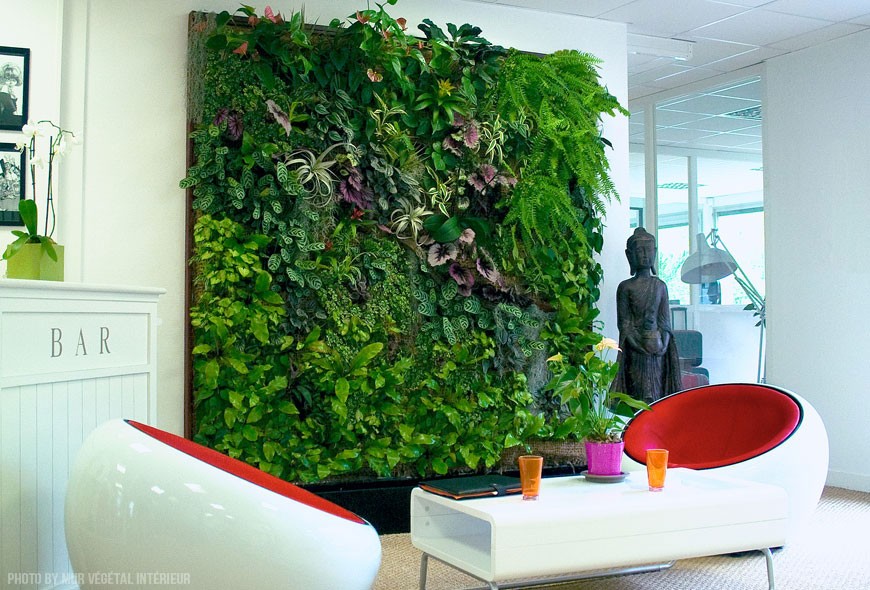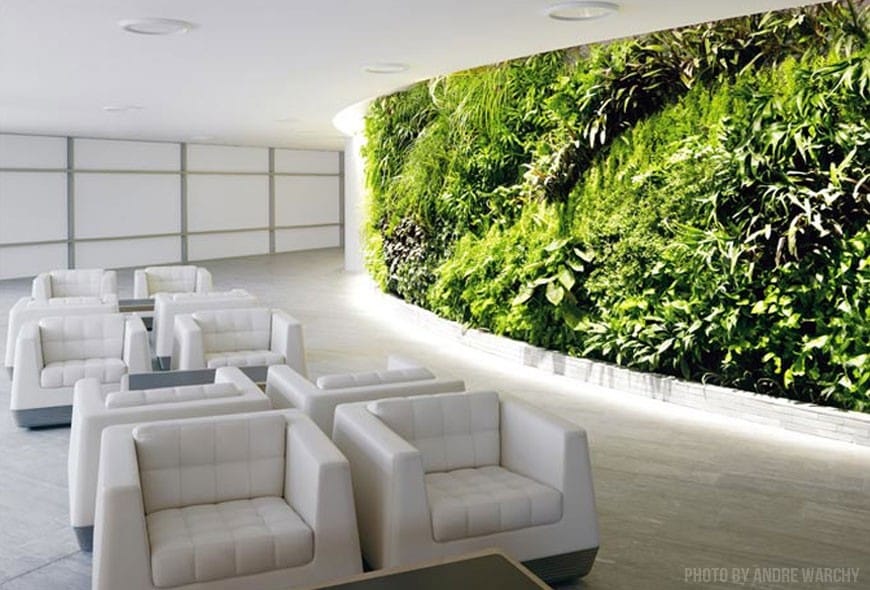What happens when architecture meets nature? The answer is: greening the vertical surfaces with plants. Though green walls have become trendy lately, they are much more than the latest design fad.
In fact, the first “vegetal wall” was introduced in the first half of the 20th century, and just like that, the revolution in sustainable architecture began. Beyond the decorative element, a green wall is purifying the air, shielding the space from the elements, cutting electricity bills, reducing stress, enhancing well-being, improving acoustics, increasing property value and energy-efficiency.
With that in mind, you do not need more reasons to consider introducing a green wall into your home. Now that we have got all the whys covered, let us move on to the hows.
Ways to Make a Green Wall
There are three ways of doing this. The first and, we might call it, traditional way is inexpensive, but it takes time to grow, as the plants are grown up a wire or trellis. The second and third are modern alternatives which involve fixing irrigated modules to a frame, separated from the building wall with a geotextile membrane and an air gap.
It is possible to create a more naturalistic effect by planting in cages made of crushed bricks or plant some greenery in an old wooden pallet. For a small indoor living wall undertaking you can also use picture frames, recycled materials, or containment system among other options.
According to the landscape designers at Elmich, a recipient of the Singapore Sustainability Award in 2015, “BGM vertical modular attachments are the most suitable option as they can be easily installed on both exterior and interior surfaces. This is due to the fact that high-strength recycled plastic panels contain a geotextile lineup and is pre-planted to allow proper establishment of foliage.”
Make Your Own Indoor Living Wall
For a larger scale project you will need professional help, but you can still try yourself with a smaller scale endeavor inside your home. You will need to choose a space for your garden and then build a frame. For that, you will need a solid structure (plastic) which you can hang onto the wall.
Now, attach a layer of fabric (felt) to the frame to be a foundation where your plants will live and grow. Set up an irrigation system. The water must be able to reach all parts of the green wall. You will also need a fertilizing system.
Choose Your Plants
Which plants you will choose will depend on your aesthetic preferences and on their suitability to indoor conditions. You must take the lighting features into consideration and different growth structures of the plants (some grow upwards, some drape, other climb, etc).
Some of the best plants for indoor vertical gardens are pothos (for low-light), sword fern (easy maintenance), wedding vine (tolerant to dry and wet conditions), or philodendron (great ornament). You can also create a vertical garden you can eat (lettuce).
Complimenting Your Décor
It is obvious that no matter how big or small your living wall is it will be the focal point of the room. That means that all the other items and decorative elements should adapt to it. Because it is obvious by now, that you are aiming for a naturalistic décor, make sure the wall colors are in harmony with it.
Opt for warm shades, such as beige, cognac, light green, etc. Wooden furniture and accessories will only accentuate the back-to-the-roots idea.
Hopefully, you are convinced that some greening-up is a great idea. Start small with DIY projects, and soon enough, who knows? You might decide that bigger and greener is always better, and at that point, you may want to seek professional services.


